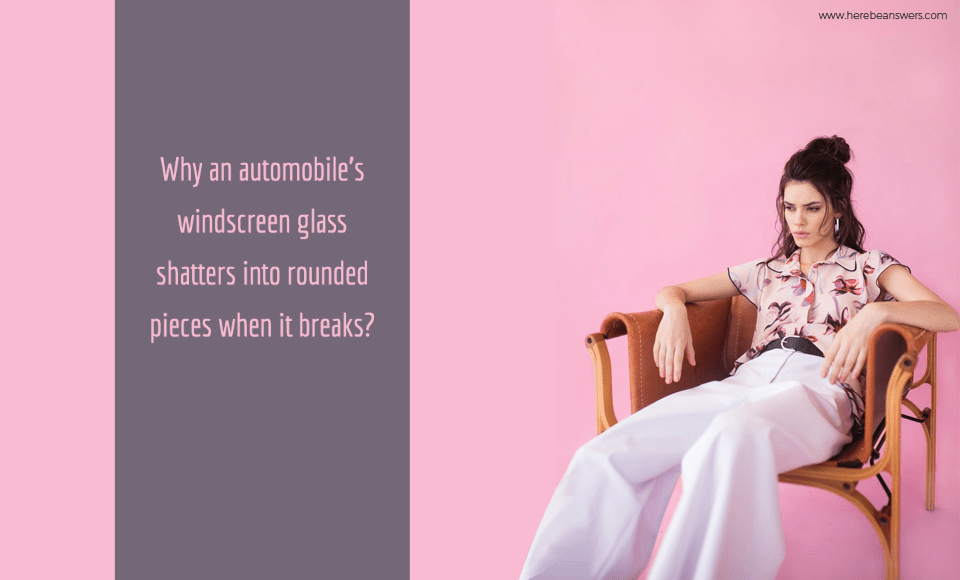The reason why the glass found in our vehicle’s windscreen doesn’t break easily is that it has undergone a process of toughening or lamination. For it to be approved and become an official part of the automobile, it must be able to withstand several hard impacts without shattering. This almost unbreakable feature of the car glass is there to ensure the safe of the driver and the passenger against shards of glass that may inflict wounds or complications in their bodies if ever they shatter. This kind of glass is called safety glass, and it is far stronger than an ordinary glass since it has a special coating that prevents it from shattering completely.
There are currently two main kinds of safety glasses that are produced by many automobile companies, and these are toughened and laminated glass.
Toughened Glass
Toughened glass is made by heating an ordinary glass sheet in a furnace. The temperature on the furnace is gradually raised until the glass almost becomes a plastic-like material. The glass is then quickly lifted out of the furnace, and it is bent in necessary areas by using matching tools. The material is then cooled rapidly in all of its parts by utilizing jets of cold air blown forcibly on to it. This entire process is called tempering. When toughened glass breaks, it shatters into hundreds of blunt and rounded particles that cannot splinter away from the frame and cause cuts to the driver or passenger.
A man named Francois Barthelemy Alfred Royer de la Bastie is considered to be the first to develop the process of creating toughened or tempered glass. However, his method involves lowering the temperature of molten glass by dipping it in a bathtub full of grease or oil, and he first did this in 1874 before applying for a patent a few months after on August 12, 1874. Because of his invention, tempered glass was once named after him in France, as it was called “Bastie glass.” However, a German whose name is Friedrich Siemen developed a different process for the tempered glass, wherein the material produced is much stronger than the one that Bastie created. Despite having many patents applied to the process of tempering glass, the first official patent for it was granted to Rudolph A. Seiden, a chemist who moved to the United States from Austria in 1935.
Laminated Glass
The second type of safety glass is the laminated glass, which is a material that combines glass and plastic for extra durability. In order to achieve this combination, two sheets of flat glass that have a layer of polyvinyl butyral at the center are gently heated under vacuum, and the heat eventually evacuates all air from the laminates, and the temperature then bonds the two sheets together under pressure. Laminated glass is considered a safety glass because when it breaks, the pieces of glass will remain stuck because it is stopped by the outer layer of plastic. You can get some idea about car towing from Sheen Group.
The French chemist named Édouard Bénédictus is credited to be the inventor of the laminated glass in 1903, although it is reported that he invented it by accident. During a laboratory test, a glass flash became coated with cellulose nitrate, and when it was dropped, the pieces of glass remained almost intact because the shattering was stopped by the plastic that coats the flask. Upon learning that two women were injured because of glass debris penetrating their bodies in a car accident, he filed a patent for his invention in 1909 so that it can be used to improve the durability of automobile glass. Two years after applying for the patent, he founded the “Société du Verre Triple,” a group dedicated to creating laminated glass for vehicles to lessen the number of casualties in car accidents. However, during that time, the manufacturing of laminated glass was an expensive process, which is why using it for automobiles was not popular. The Triplex glass was eventually licensed to The English Triplex Safety Glass Company in 1912, and this corporation was responsible for making laminated glass more accessible. Before becoming one of the most common types of safety glass for automobiles, laminated glass was often utilized in the eyepieces of World War I gas masks because of their ability to be almost unbreakable while also stopping toxic gasses from entering the user’s lungs.
Additional reading:
- Toughened glass (Wikipedia)
- Laminated glass (Wikipedia)
